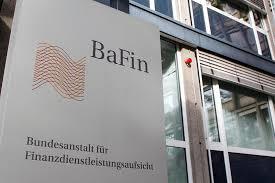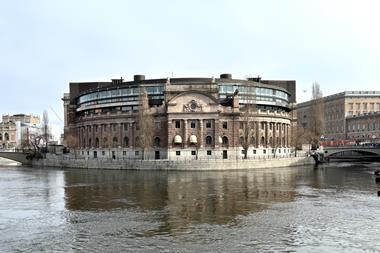A survey conducted last year by Deutsche Bank found that over one-third of hedge-fund investors require managers to provide detailed information about the holdings and risk in their portfolios. Yet, according to an earlier report by Capital Markets Risk Advisors (CMRA) in association with the Alternative Investment Managers Association, while 60% of the investors who get full position level detail have their own tools to analyse it, the remainder simply skim the information.
According to a CMRA report, “While a two-inch printout of positions might give an investor insight into a long/short equity strategy or a distressed debt portfolio, it is unlikely that even a sophisticated investor could gain much insight into a complex fixed income arbitrage portfolio without the help of analytical tools, which would require machine readable information as a starting point. In addition, no analytical tool, for example, no matter how robust, will pick up the ‘off-the-balance-sheet’ put option embedded in merger arbitrage and other strategies.”
A thing might well be see-through, but what is ‘seen’ will depend entirely on the biases, assumptions and ability of the person doing the looking. And, therefore, the problem with hedge fund ‘transparency’ is this: as a concept it is fundamentally flawed by its static, non-relational nature, by the assumption that the data does the talking.
In reality, data needs an interpreter, whose most dangerous assumption might turn out to be that he is safe because he has position-level transparency. Position-level transparency can give a sense of false security; sometimes a lot of information can be a dangerous thing.
According to a survey by risk management consultancy Reech Capital, fund of funds do not obtain full information on a third of their underlying managers. While some managers are providing additional disclosure, others believe that extensive monitoring would provide investors with (again) a “false sense of security”. Fund of funds manager LJH suggests in a white paper on transparency, “…as the recent Beacon Hill blowup shows, even sophisticated investors (eg, Lehman, Societe Generale) with cutting edge analytics and with the benefit of full transparency offered by separate accounts may not always be able to stop a ruthless and opportunistic manager dead on his track.” Those hedge fund platforms, by the way, argue that they took lesser hits than other investors, and that therefore the transparency of the managed account was proven.
Pacific Alternative Asset Management Company, Paamco’s Stephen Oxley, who heads up the company’s London office, is a fan of position-level transparency at the fund of fund level. “There are risks in running a portfolio of hedge funds, and transparency can help you understand what those risks are,” he says.
However, most hedge funds would not want the end investor to have position-level information. “Transparency gives our clients comfort that we know what is going on, but we wouldn’t pass it on,” he says. He has not found that the demand for transparency has had an impact on performance, and even suggests the information Paamco gleans from its number crunching might give the hedge funds a perspective they might not get elsewhere.
Paamco has an in-house risk platform to turn the data into ‘something useful’, and to protect the proprietary nature and confidential nature of the information, the systems have to be as secure as they are savvy. The in-house system (Paamco uses Northshield) runs a number of metrics designed to order information in a style-specific way – arranging positions held by long-short managers by sector, geography, market cap, liquidity, short interest, the most important names.
On an aggregate level, the information is useful to determine exposure to various asset classes, and this ‘top-down’ factor that is said to be becoming more important as the fund of funds institutionalise. Oxley recognises that this is the factor in which the institutions are most interested, because their investment approach is largely asset allocation driven. However, he says, “We use it primarily to monitor changes in behaviour and the development of decisions as assets under management grows and the people change.”
In other words, the fund of funds manager uses the information not to second guess the manager, or to overlay his decisions, but to assess whether there is any reason to suggest that the formula that has made him include the fund in his product in the first place is changing. This approach acts as though in buying a hedge fund manager you are buying into an investment story; the important factor is whether and how the narrative is changing. The data will help the manager have an intelligent discussion about those changes, and hopefully to avoid those blow ups that comes as a result of style drift, or fallen off performance that comes as a result of personnel (or personal) changes or reduced opportunities from growth in assets under management. The numbers are a quantitative tool used to unearth qualitative changes that could have the ultimate quantitative consequence.
This approach also suggests that it is not a once-only risk snapshot, but changes over time that are important, and that whatever way your numbers come, they are best treated dynamically.
If position-level information is pointless for many institutions, what CMRA calls ‘risk translucency’ is probably the answer – the raw data goes to a third party provider who will slice it and dice it and package it up for you. There are many such services – CMRA itself, Reech Capital (now part of Sungard), NAV Consulting for the managed futures funds – which will provide an investor with what CMRA calls ‘risk translucency’, a consistent, aggregable “risk profile.”
There are standards emerging as to what that risk profile should contain. An International Association of Financial Engineers report suggested breaking down information into four categories, content, granularity, frequency and delay. It suggested that content – information about the risk, return and positions on an actual and a stress-tested basis – could include: VaR (but only if calculated using an industry-standard definition, which does not yet exist for hedge funds); aggregate measures of a fund’s exposure to different types of asset classes; aggregate measures of a fund’s exposure to different geographic regions; net asset value (NAV) and stress measures of NAV appropriate to the strategy; cash as a percent of equity; correlation to an appropriate benchmark; delta, gamma and other measures of optionality, as appropriate. Risk orientation is also crucial. It is easy to slip into thinking you are looking for excess risk, whereas the danger to returns can though come from a manager who is for some reason running his portfolio more conservatively than the slot in the portfolio requires.
In terms of granularity, it suggested that for those funds that will not place the investor’s interests at risk through such disclosure, the top ten single exposures and concentrated sector exposures expressed on a net basis could be useful. It suggested that high turnover trading strategies may require more frequent disclosure (for example, daily) than private or distressed debt investment funds where monthly or quarterly disclosure is more appropriate.
If it seems as though there is no answer to the question about what level of transparency is appropriate for, that is because the answer is an individual one. The level of numerical transparency at he fund level has to fit with an institution’s overall risk management framework – not only its analytical skills, but the way it makes decisions about which funds to invest with in the first place, whether it looks at its alternative investments as a separate ‘alpha-adding’ box, or in relation to its overall asset allocation, its level of formality. It can be as important to know that a manager is going through a divorce, or how he would respond to the need to develop his infrastructure to take growth of his organisation to the next level, as to have a list of the positions he invested in yesterday.



























No comments yet